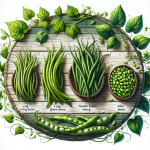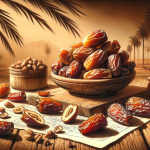Types Of Milk
Learn about Types Of Milk. Milk is a white nutritional substance produced by mammals to feed their young. All types of milk are produced by the female’s mammary glands and supplied through the breast and teat. Milk is an excellent source of antibodies and nutrition. The World Health Organization (WHO) recommends that all women breastfeed their children for a minimum of six months. In some countries children are breastfed by their mothers, or wet nurses, up to the age of five or more. Almost every mammal on the planet produces milk to feed its young before other food sources are able to be consumed. Humans are some of the only mammals to consume different types of milk produced by another species.
Human beings consume milk from a variety of mammals. The most commonly sought after type of milk is cow milk. In 2011 approximately 85% of commercial milk production and sales came from cow milk. The worlds number one producer and consumer of milk is India: all production and consumption is domestic. As stated before, almost all mammals produce milk. People across the globe consume various types of milk from bison, buffalo, camel, goat, sheep, dolphin, donkey, yak, reindeer, horse, and moose.
Milk is categorized as being grade A or grade B. Of these two types of milk, Grade A is produced and ready for direct consumption, e.g. a glass of milk. Grade B milk is used in indirect consumption. Grade B is used in cheese production and process foods. The difference between grade A and B milk is quite specific. Grade A dairy farms must be inspected every six months and grade B is only inspected every two years. Other differences between the two grades are defined by somatic cell counts, bacterial plate counts, loop counts, and processing specifications.
If milk is left sitting for periods of twelve to twenty-four hours, a thick fatty substance floats to the top. This thick fatty substance is called cream, and it is usually scraped off the top and sold separately from the thinner, less fatty milk below. In most commercial dairy farms, the milk is placed in a centrifuge for rapid separation of the cream and milk.
The advent of homogenization has allowed for the production of different types of milk. These varieties include whole milk, 2% milk, 1% milk, and skim milk. Homogenization is a treatment process that prevents the cream from separating and distributes the fatty aspects throughout the milk. This process requires high pressure and turbulence to break up the fat globules in the milk. Once the fat globules are broken up and exposed, they become susceptible to certain enzymes that cause the fats to break down, producing rancid flavors. In order to prevent the milk enzymes from breaking down the fat globules, milk is pasteurized before or during the homogenization process. Pasteurization is the process of deactivating the responsible enzymes.
Milk can be further divided into categories based on specific factors in its production and type. The most controversial factor is whether or not the milk was produced from cows given supplemental bovine growth hormone (rbST or rBGH). This is a naturally occurring hormone that some dairy farmers are giving to their cows to increase milk production. The Food and Drug Administration labeled rbST and rBGH safe for sale in the United States, but other countries, like Japan, Canada, New Zealand, Australia, and the European Union, have banned its use.






